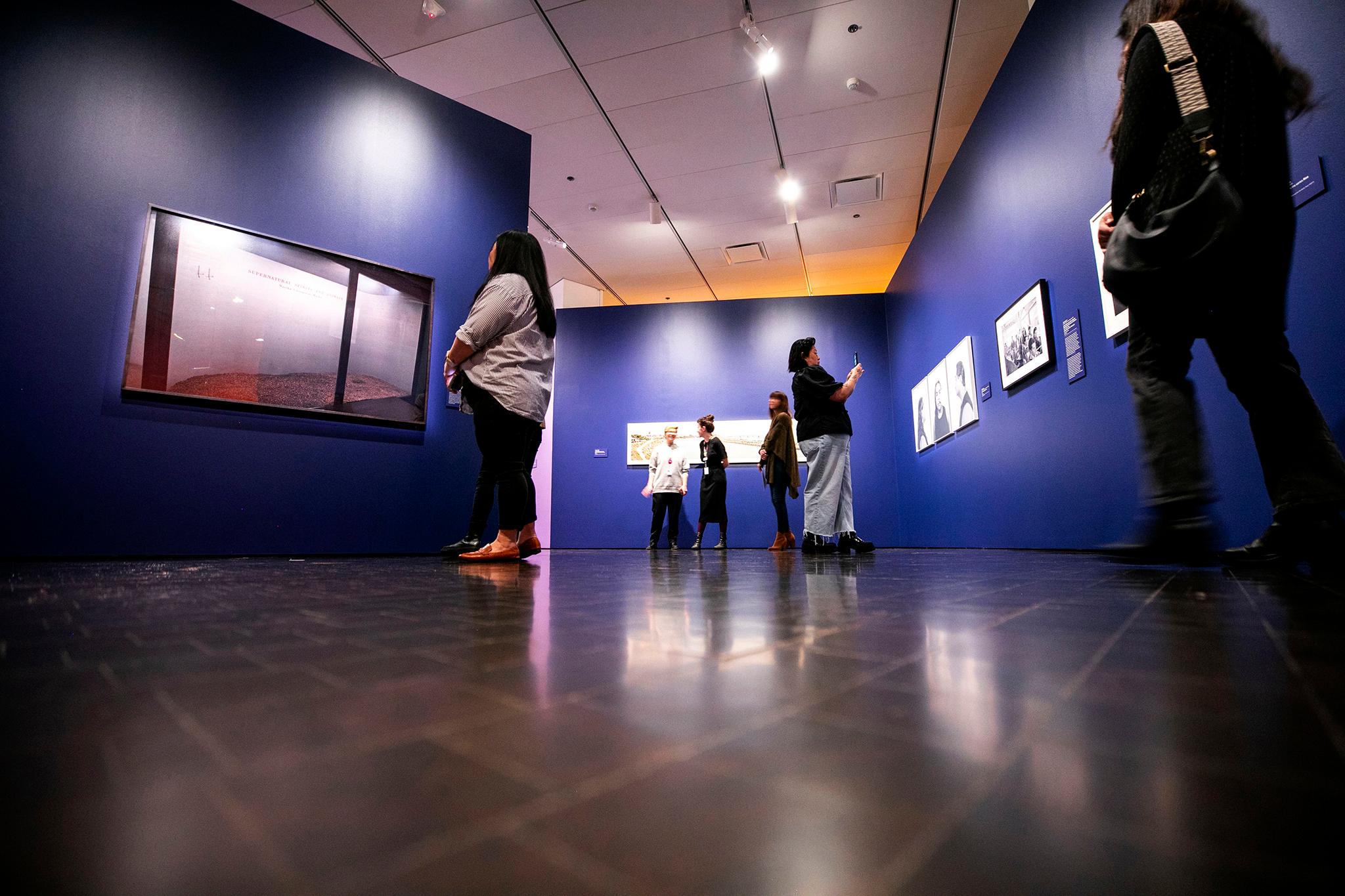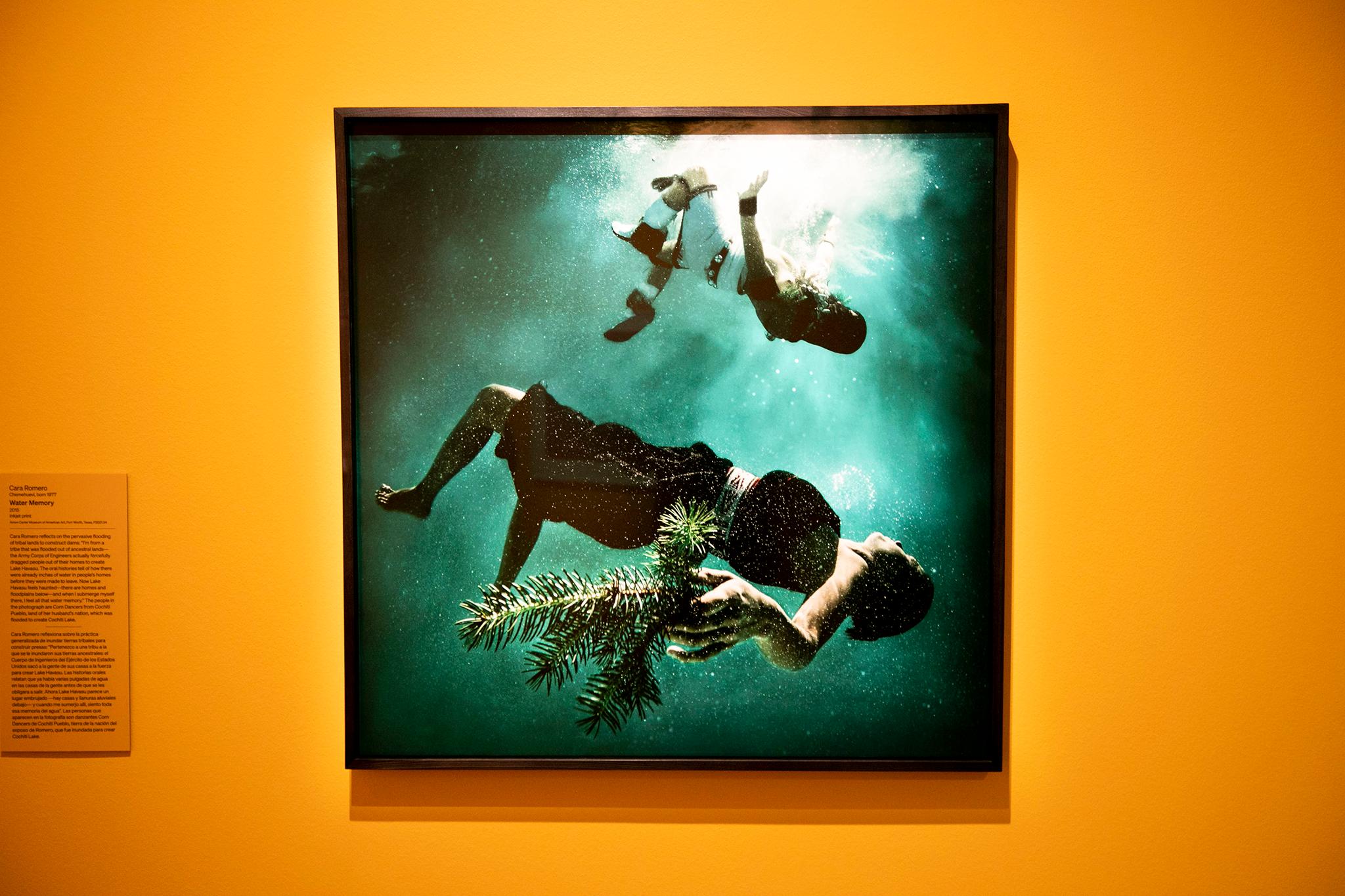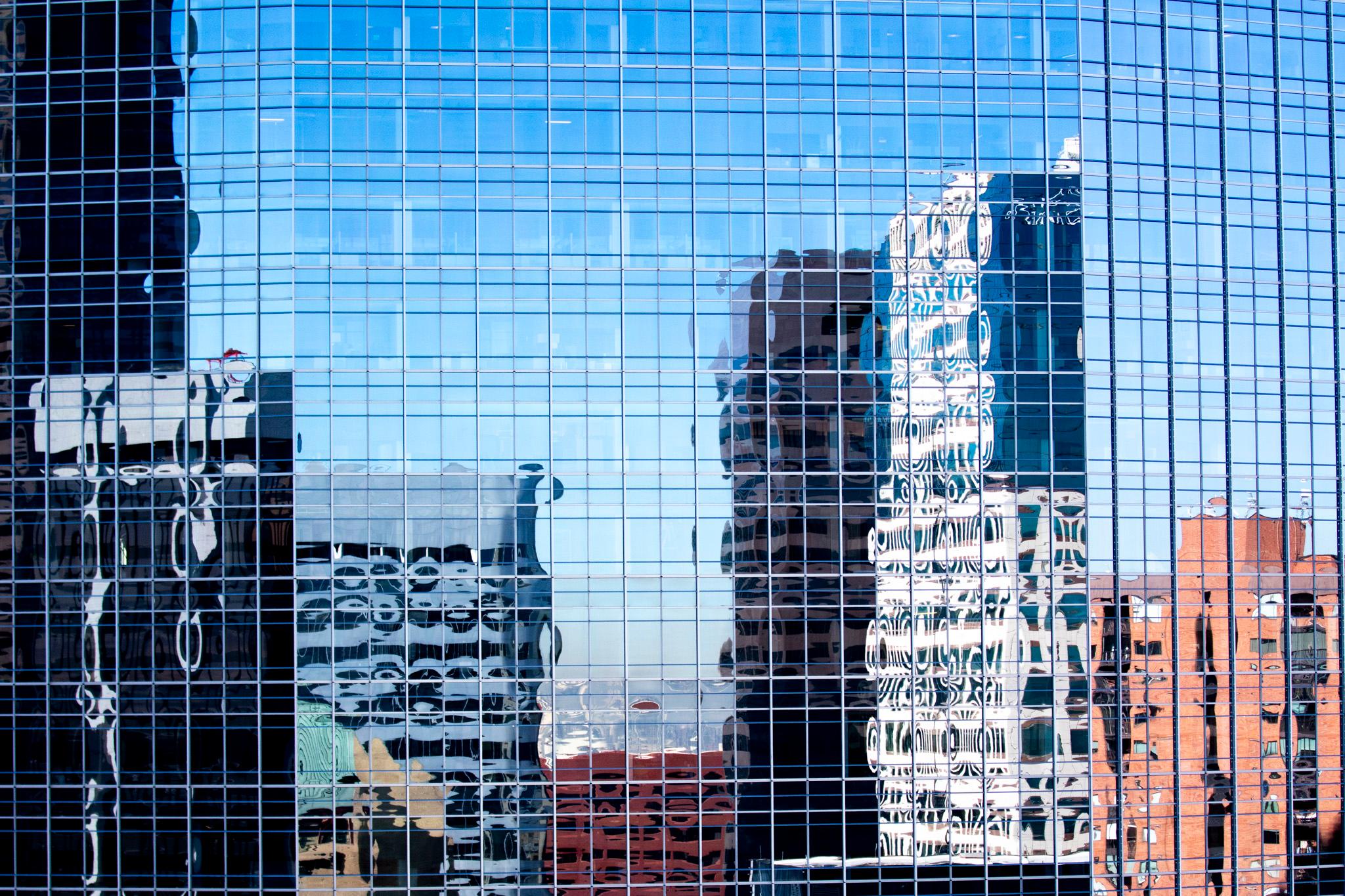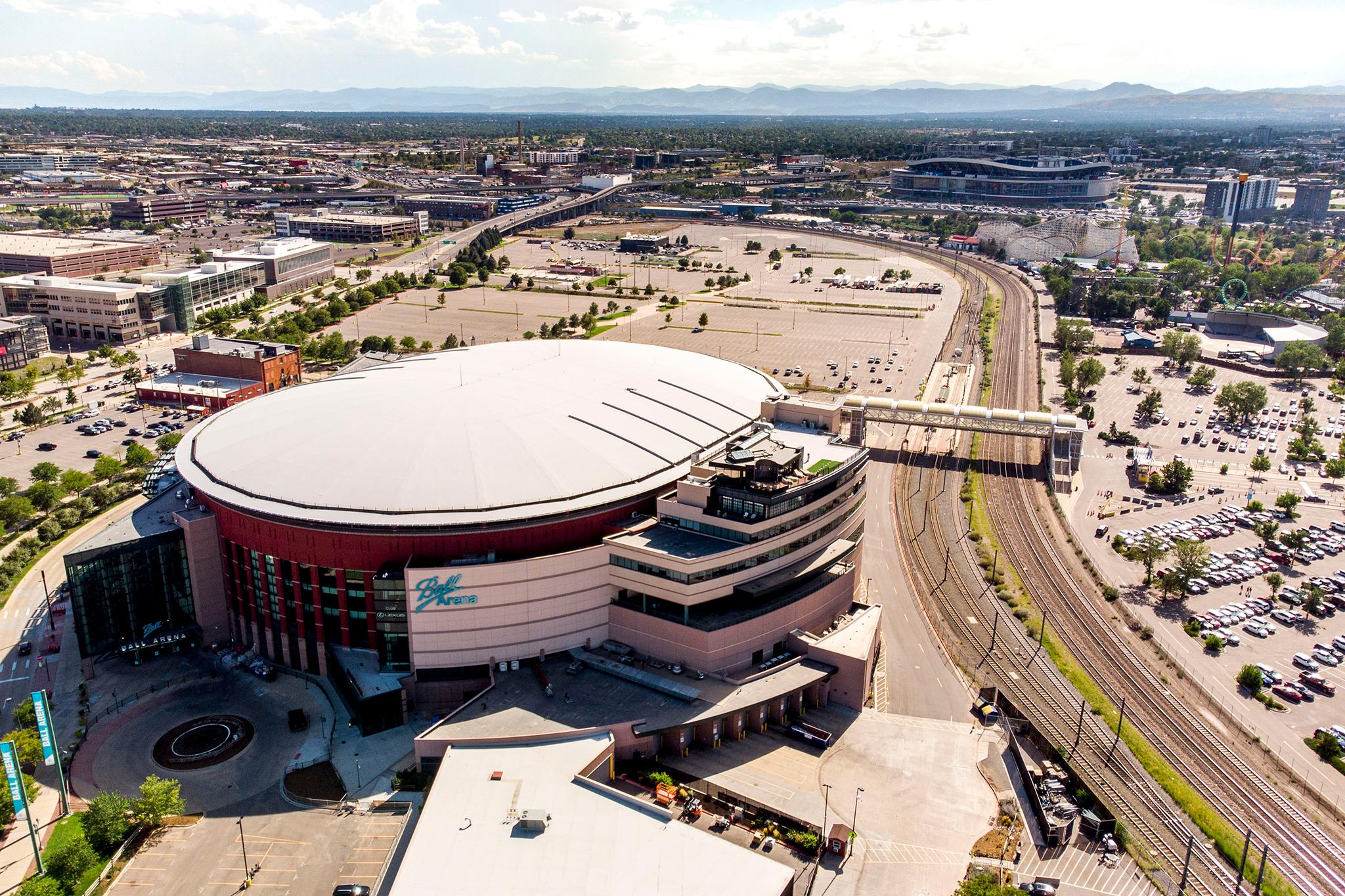The image of an empty natural museum display case, titled "Supernatural Spirits and Animals," paired with an overhead voice of an auctioneer calling out prices for the sale of sacred Indigenous material culture is chilling.
The piece, a critique on museums' active and inherent role in settler colonialism, is by Nicholas Galanin, a Tlingit and Unangax̂ multi-disciplinary artist and musician from Alaska. It's part of a new exhibition opening Sunday, Feb. 19 at the Denver Art Museum titled "Speaking with Light: Contemporary Indigenous Photography."
"These non-Indigenous institutions do not belong to this power, and this power does not belong to them," the artist explains on the attached museum label.

The exhibition is organized by the Amon Carter Museum of American Art in Fort Worth, TX.
As you walk inside, there are bold and bright orange letters that sit on a somber dark blue wall with a statement.
"[Indigenous contemporary artists] demand that their existence, perspectives, and troubling histories be recognized," it reads.
It will be on view in the Hamilton Building's Gallagher Family Gallery through May 21 and is included in general admission, which is free for everyone 18 and under.
Split into four sections, the DAM is hosting a journey that invites visitors to consider the narratives they hold about Indigenous personhood.

The exhibition begins by featuring photographs by white photographers when Indigenous leaders traveled to Washington, D.C. for treaty negotiations.
This section then leads into the work of more than 30 contemporary Indigenous photographers some of which include Hulleah Tsinhnahjinnie (Taskigi/Diné), Nicholas Galanin (Tlingit/Unangax̂ ), Jeremy Dennis (Shinnecock) and Wendy Red Star (Apsáalooke) who is a former artist-in-residence at the DAM.
"These photographs trace paths across time and place and reflect experiences that can shape and inform understanding of the past, the present and the future." said Eric Paddock, Curator of Photography at the DAM and the local curator of the exhibition. "It gives us an important perspective on the history of this continent."

Tucked inside a white box is a video installation of a 3.5 mile shoreline, which divides Queens and Brooklyn, New York, that slowly glazes across a screen made almost entirely of white turkey feathers. The installation is by Alan Michelson, a Mohawk member of Six Nations of the Grand River, highlights the polluted land that once belonged to the native Lenape nation.
"Our location on the homeland of the Arapaho, Cheyenne and Ute peoples underscores the importance of highlighting historically underrepresented views and voices of Indigenous communities," said Christoph Heinrich, Frederick and Jan Mayer Director of the DAM. "The works...aim to shift power dynamics and bring attention to misrepresentations by focusing on Indigenous perspectives."














